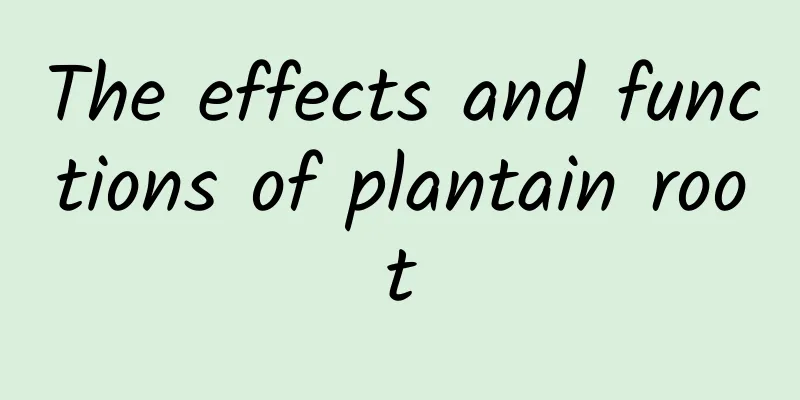The efficacy and function of walnut leaves

|
In today's society, health preservation seems to be an eternal topic. Nowadays, many people like to use some Chinese medicinal materials to regulate their bodies, because these medicinal materials are natural and pollution-free. Here we will introduce walnut leaves to you. [Source] The leaves of walnut , a plant of the Juglandaceae family. [Chemical composition] The leaves contain gallic acid, condensed gallic acid, elaidic acid, α- and β-pinene, limonene, 1,8-cineole, juglonequinone, α-hydrojuglone glucoside, β-carotene, juglone, quercetin-3-α-L-arabinoside, hyperoside and a polyphenol complex with high anti-inflammatory effects. And contains 5-hydroxytryptamine. [Pharmacological action] The water extract of the leaves (does not contain juglone) has a strong bactericidal effect on anthrax bacteria and diphtheria bacteria, and a weak bactericidal effect on Vibrio cholerae, Bacillus subtilis, Pneumococcus, Streptococcus, Staphylococcus aureus, as well as Escherichia coli, Salmonella typhi, and Shigella dysenteriae. It is non-toxic when taken orally and can protect mice against anthrax infection. Ineffective against Mycobacterium tuberculosis. The clinical efficacy for tuberculosis is also poor. The water extract of the leaves and the purified juglone can neutralize tetanus and diphtheria toxins in vitro, but have no toxin-neutralizing effect in vivo. In test tubes, leaf extracts at concentrations above 1:100 can kill Leptospira. The polyphenol compounds contained in the leaves have good anti-inflammatory effects; flavonoids can lower blood pressure in dogs. Phytoncide obtained from walnut (leaves?) can enhance the secretion and motility of the small intestine of dogs and rabbits. The leaf decoction can also accelerate the assimilation of sugar in rats or lower blood sugar. 【Nature and flavor】 "Guizhou Herbal Medicine": "Warm in nature, sweet in taste." 【Functions and indications】 Treat leucorrhea, scabies, and elephantiasis. 【Usage and Dosage】 For oral administration: decoction. For external use: decoct in water and wash. [Additional prescription] ① Treat excessive leucorrhea: add 10 pieces of walnut leaves and 2 eggs, boil and drink. (Su Medical Handbook of Chinese Herbal Medicine) 【Excerpt】 《*Dictionary》 【Source】 From "Guizhou Herbs" After reading the above article, I believe everyone has basically understood the effects and functions of walnut leaves, right? The medicinal value of walnut leaves is extremely high, but it is not suitable for everyone. You should judge based on your own actual situation. I hope everyone will pay attention to this. |
<<: The efficacy and function of nuclear wood
>>: The efficacy and function of Ai tablets
Recommend
Mobile Sales: A Sales Model That Stands the Test of the Future
Liquidity We focus on three segments at different...
The efficacy and function of Hemeng root
Traditional Chinese medicine has a history of tho...
The high temperature of 39℃+ is here again. It has become a "furnace" before the beginning of the dog days. Why is it so hot this summer?
This June, many areas in northern my country seem...
The effect of Xianlingpi
The current living environment always brings us t...
How to eat Cistanche deserticola to nourish the kidneys?
The kidney is a very important organ in the human...
The efficacy and function of Hubei Aralia
Hubei Aralia is a medicinal material. If we have ...
The efficacy and function of Achyranthes bidentata
Recently, major TV channels have launched various...
Throwing a baby dolphin to death like a ball! How terrible is it that the killer whale has been focusing on bullying for 60 years?
On July 25, 2022, killer whale researcher Deborah...
After testing hundreds of pieces, many families still use these high-risk products
"Dad's Laboratory" has been providi...
Self-portraits in the “Autumn Tiger”: Either arrogant or low-key, I love to go to these cities
China Weather Network News: Recently, the "a...
The role and efficacy of Polygonum multiflorum
Polygonum multiflorum is a well-known precious me...
What are the effects and functions of bamboo ru
Bamboo Rhizome is a kind of Chinese medicinal mat...
What are the medicinal effects of silkworm?
Bombyx mori is rich in carbohydrates and trace el...
Black technology in future agriculture: How can green and intelligent fertilizers ensure that crops are well fed without waste?
Imagine that you are a farmer, carrying bags of f...
The efficacy and function of bamboo
The Chinese medicinal bamboo is a relatively good...









